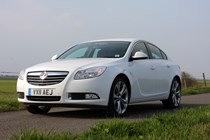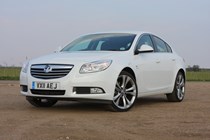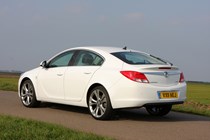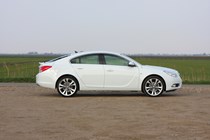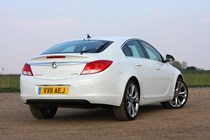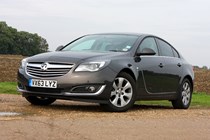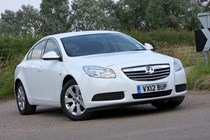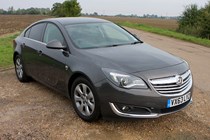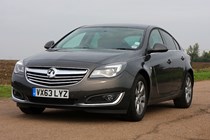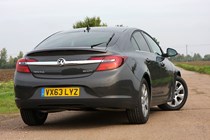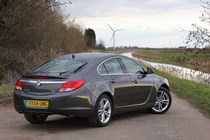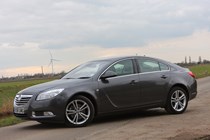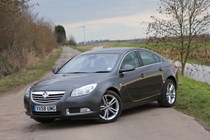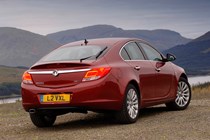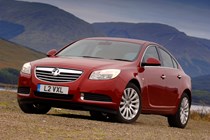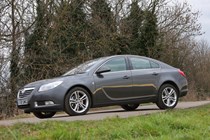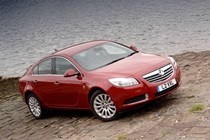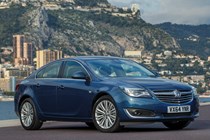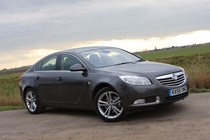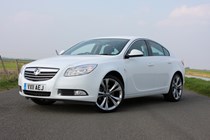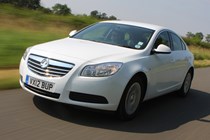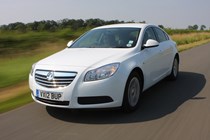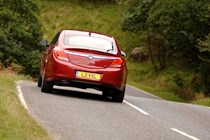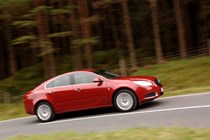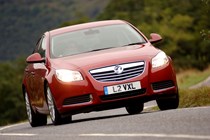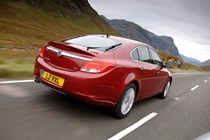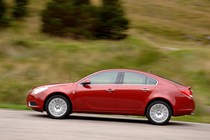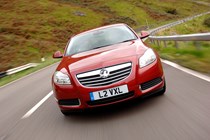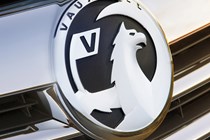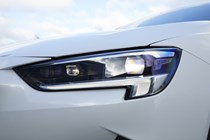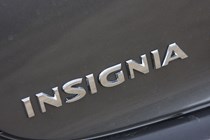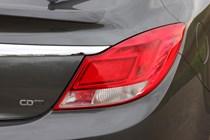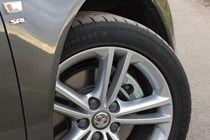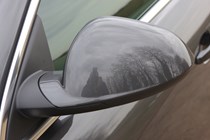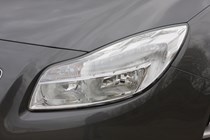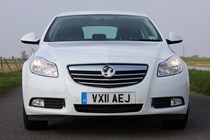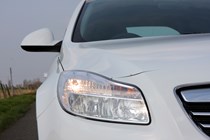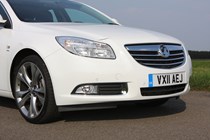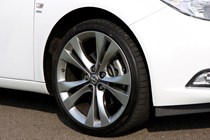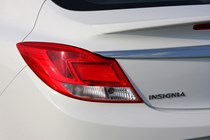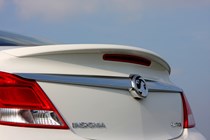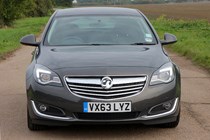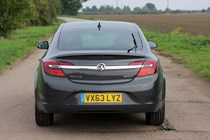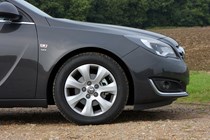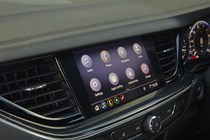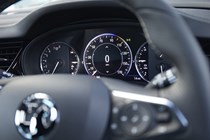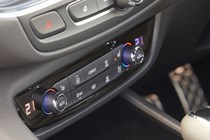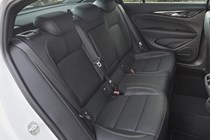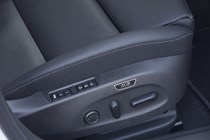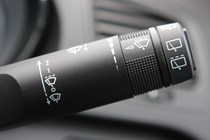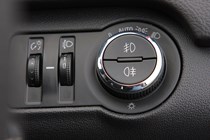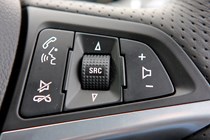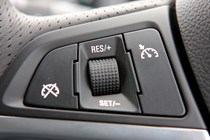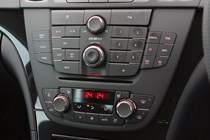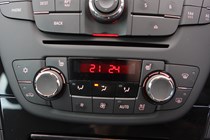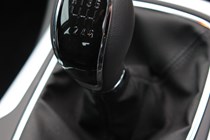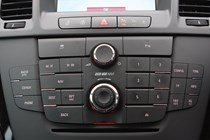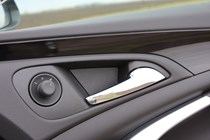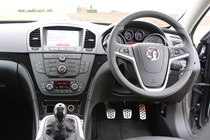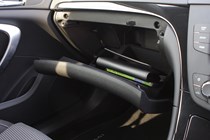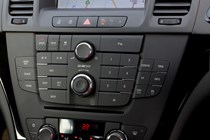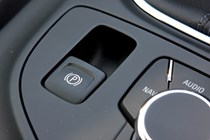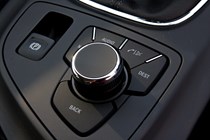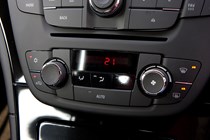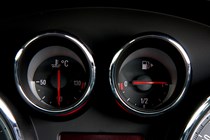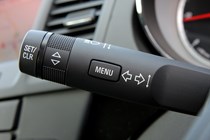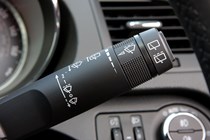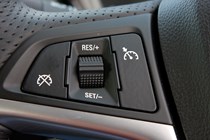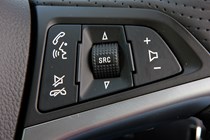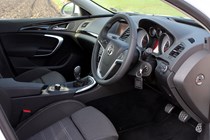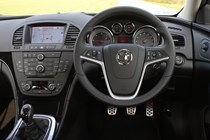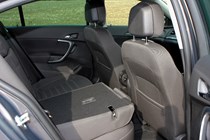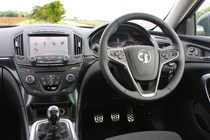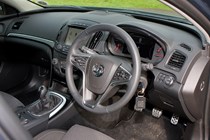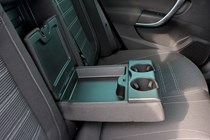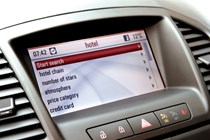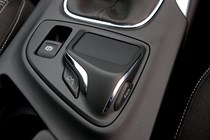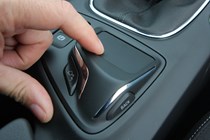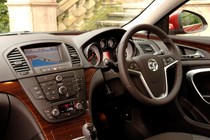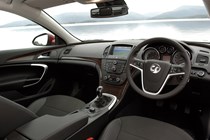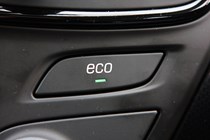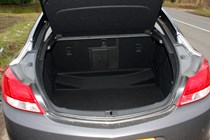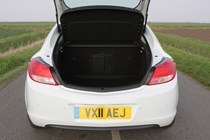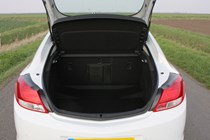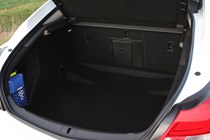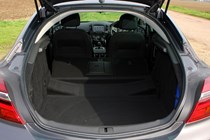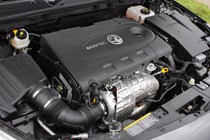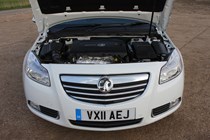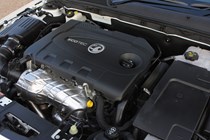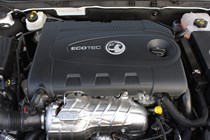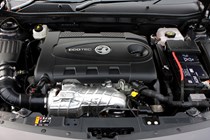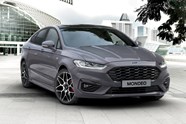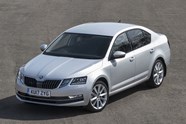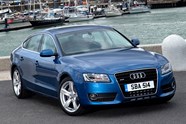
Vauxhall Insignia Hatchback (2009-2017) review
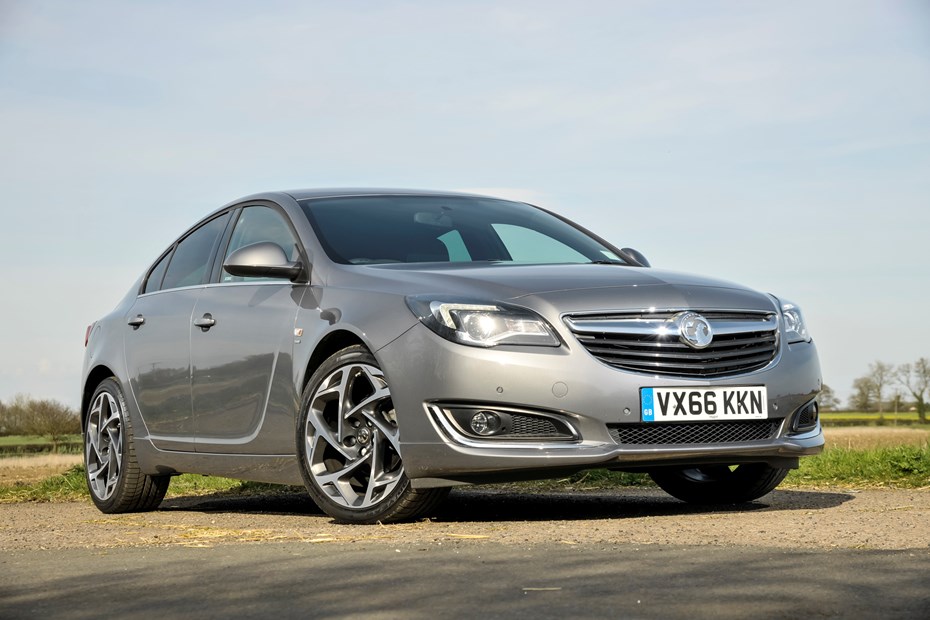
At a glance
| Price new | £17,765 - £33,350 |
|---|---|
| Used prices | £474 - £9,297 |
| Road tax cost | £0 - £735 |
| Insurance group | 14 - 38 |
Get an insurance quote with

|
|
| Fuel economy | Not tested to latest standards |
| Range | 385 - 1170 miles |
| Number of doors | 5 |
| View full specs for a specific version | |
Available fuel types
Petrol
Diesel
Pros & cons
- Refined and comfortable cruiser
- Good quality interior
- Spacious cabin and boot
- Questionable diesel reliability
- Not as good to drive as a Mondeo
- Over-assisted steering
Vauxhall Insignia Hatchback (09-17) rivals
Overview
Before the dominance of premium brands, a big, comfortable mainstream car was something many British drivers appreciated. Vauxhall’s skill in giving company car drivers and families an affordable yet spacious, well-equipped vehicle was reprised for the Insignia in 2009. It’s a popular used car for families, and a solid workhorse for long-distance drivers and commuters.
Replacing unloved Vectras, the forgotten Vauxhall Signum and the dated Omega – in spirit, at least – the largest Vauxhall also occupied the space vacated by Saab, benefitting from many innovations developed for the 9-3 and 9-5. The second generation Insignia Grand Sport replaced the hatchback in 2017, but saloons ended with this generation.
For used buyers, the good news is that the Insignia remained a firm favourite with families and company car drivers for many years, as well as hire fleets. Low cost, with heavy depreciation and big discounts, for a long time it ranked as one of the best used cars for less than £5,000.
It’s comfortable, a great motorway cruiser, and consistently good value for money, with higher build quality and a more sophisticated approach to style and technology than the Vectra it replaced. There’s one caveat though – it still doesn’t drive as well as rivals. When new, buyers could accept that – it offered a lot of space and equipment at a much lower cost – but on the second hand market you could easily afford a Ford Mondeo, Skoda Octavia, or even an Audi A5 sportback.
Vauxhall Insignia A – 2009-2017 buying guide
The first generation Insigna was produced from 2009 to 2017, with a mid-term facelift in 2013 that moved the emphasis towards low CO2 rather than higher-performance models and 4x4 options. It’s a well-known car in the motor trade, and petrol models are generally a safe – if rather unexciting – used car buy. With a little care and attention a used Vauxhall Insignia should provide excellent value for money, impressive long-distance ability, and plenty of space both for luggage and passengers.
There are many trim levels, and often the engine range was available in most, so an SRi-Line might not be the sporty family car you expect. If you’re looking for the fastest and rarest Insignias – the 21st-century Cavalier GSi or Senator equivalents – we’d recommend joining an enthusiast forum first, both to learn more about the V6 engine, and to keep an eye out for well-maintained examples for sale privately.
While this review focuses on the hatchback, most of the points are applicable to the Insignia saloon and Insignia Sports Tourer estate as well.
Vauxhall Insignia A hatchback known faults and common problems
1. Diesel engine – 2.0-litre CDTi
Our advice is broadly ‘don’t buy a pre-2015 Insignia diesel’. They fall foul of clean air zones such as ULEZ, and can be unreliable if not maintained well (as a discounted fleet car, many have been treated as disposable and neglected as a result).
The majority of Insignias have the same 2.0-litre diesel tuned for different power outputs. Derived from Fiat’s MultiJet II, early units with simpler emissions control systems can be reliable with just routine servicing, though the 20,000 mile interval only applies if long-life oil is used. 10,000 mile/annual changes are a good sign.
Nearly all pre-2017 versions of this engine share a common loss of oil pressure problem, due to the design of the oil pickup in the sump. Failure is usually catastrophic. If the car displays a low oil pressure warning when first started, this is an early warning to get the seal replaced before the engine is damaged – if a car you are looking at displays that message, walk away.
Timing belts should be done at 100,000 miles or six years, and it’s important that the pulley is in good condition and the water pump is changed at the same time.
Common JTD/CDTi running issues (misfires, excessive smoke) include injector leaks, sensor failures (malfunction/check engine light) and worn turbos with age. These engines have a tendency to deteriorate quickly if neglected.
2. Diesel engine – ‘Whisper’ diesel
From 2014-on the advanced GM-designed 1.6-litre ‘Whisper’ diesel can be found as an Ecotec CDTi with 140hp or 160hp. Timing chain rattles are a sign of imminent failure, and with Euro 6 emissions in mind the engine is more complex overall.
When listening for timing chain noises, you want to focus on the gearbox side of the engine – the chain’s ‘at the back’ and for this reason, any loud rattle on startup from this engine is a sign of an incoming four-figure bill. On the positive side, it’s a good time to get the dual mass flywheel and clutch replaced if the rest of the car is good.
Turbocharger wear is becoming common on higher mileage examples, and carbon build up on the intake and valves can impact performance as well as reliability of the emissions system. Look for regular oil changes, and take a fault code reader to check for any hidden issues the car’s ECU has detected.
3. Petrol engines – four-cylinder
The 140hp 1.8-litre A18XER can rattle when cold and idling, but it shouldn’t. The issue is usually down to cam adjusters or the cam position sensor; as with the 1.6-litre it’s worth checking when the timing belt was changed as these cars are now old enough that it should have been done at least once regardless of mileage.
2014-on 140hp Insignia 1.4-litre turbos are relatively big cars with small engines, but most issues are down to neglect rather than design. Check that any applicable recalls and software updates have been done, as this engine can be damaged if driven while misfiring.
There is a 1.6-litre turbo offered up to 2014. The A16LET offers 180hp, and it is a better match for the big Vauxhall than you might expect. Timing belt changes were originally scheduled for 10-year intervals and 100,000 miles, but later models reduced that to six years.
The most powerful four-cylinder Insignia is the 220hp (250hp from 2014) 2.0-litre turbo, which is available with all-wheel drive and FlexRide suspension.
4. Petrol engines – six cylinder including VXR
Vauxhall inherited some of SAAB’s performance market after the Swedish marque disappeared, and the Insignia offered a 2.8-litre turbocharged V6 with 260hp, usually paired with an automatic gearbox and four-wheel drive. Electrical issues are most prevalent, but the engine does suffer from timing chain stretch with high mileage (which can show as a misfire, as well as the telltale rattle).
Performance Vauxhall fans will seek out the rare 325hp VXR and again, look for signs of timing chain failure. Available in all three bodystyles, the tuned-up V6 does not seem to have suffered in terms of reliability, but it’s very rare and with a car designed to appeal to the more antisocial mindset of driving, we’d check for accident damage and later modifications.
Early V6s were subject to recall and modification by Vauxhall dealers to address some of the timing chain problems.
5. AWD and transmission problems
Four-wheel drive Insignias use the same Haldex technology as most AWD cars in the 21st century. Clutch packs can fail in the transfer case/rear differential, and maintenance is often neglected. Snappy, juddering behaviour in fast, tight bends may be down to a failed Haldex unit – it can be rebuilt, and upgraded.
Manual transmission cars should be avoided if they judder or make rumbling/rattling noises when pulling away, particularly diesels. The dual-mass flywheel is expensive to replace and generally does not last as long as many rival cars.
The automatic gearboxes are unremarkable, and share the same weaknesses as contemporary Volvo, SAAB and other front-wheel drive large autos. Neglected fluid changes, corroded cooling pipes and radiator, and wiring issues can lead to problems and can be expensive to rectify. Look for an upgraded oil cooler if the car has been used for towing.
6. Steering rack – upgraded parts
Failure of the steering rack is common on early Insignias, detected as tight spots and excessive noise. Vauxhall introduced updated parts – check the service history to see if it’s been done. This is a big car, so on older models watch out for worn suspension bushes and top mounts causing similar issues of noise and unpredictable steering effort.
Vibration in the steering wheel is often down to worn front suspension control arms, but check for kerb marks, dents or cracks on the wheel from potholes, in case the driveshaft or hub carrier have been damaged.
7. Electrical system and gadgets
The facelifted Insignia got big upgrades for the interior, including sophisticated infotainment, but as a rule the car has a lot of cutting-edge kit for any age. An early application for adaptive headlights, make sure they work if fitted as replacement is very expensive. Test every button and feature.
Vauxhall were quick to adopt CO2-saving stop-start technology. This system relies on a lot of sensors to work so don’t be surprised if the engine keeps running, particularly in winter. Battery condition is crucial – as these cars are now well over seven years old, check that the battery is the correct AGM type and has been replaced recently.
8. Boot locks and struts
Early Insignias were recalled for failure of the tailgate struts, and failure of the electric boot release is a common problem. While this can be down to wiring loom problems or other issues, generally it’s the boot lid switch. There’s a small, hidden catch accessible on the lock to open it – replacement of the Insignia’s boot switch involves removing all the boot trim but is otherwise straightforward.
9. Braking system
Many Insignias use an electronic handbrake which is relatively slow to respond. A replacement module is not cheap, so check it is working and look for reports of issues with the brakes in the MOT history.
Rear calipers are prone to binding on high-mileage cars, causing noise, poor fuel consumption and excess wear. After a test drive use an infra-red thermometer or the back of your hand near (don’t touch) the wheel and brakes to see if one wheel is appreciably hotter than the others, and see if there are hot/burned smells as well.
Rebuilding is not too expensive, but diagnosing the issue can run up bills – if in doubt get the brakes rebuilt properly instead of trying to track down a simple fix for vibration or dragging.
10. Suspension – FlexRide and HiPerStrut
Insignia suspension problems are mostly wear-related, so listen for clonks, low-speed squeaks, and rattles suggesting worn bushes. Feel for changes in the car’s angle in bends, and it should ride smoothly with little wallowing or harshness regardless of model. Higher power, V6 and AWD models feature adaptive dampers called FlexRide – you can feel the shift from comfort to firm, sporty ride when the system is working.
Some Insignias, such as the VXR, include a technology called ‘HiPerStrut’. This is not significantly different to conventional suspension, but the steering knuckle and hub carrier design is altered and introduces another bush/balljoint to consider when checking for wear.
What’s the first-generation Vauxhall Insignia like to live with?
Over the next few pages, we’ll review each aspect of the Vauxhall Insignia A hatchback, taking into account its practicality, comfort, fuel economy and performance. If you’re short on time, you can also skip to our verdict page to see if we recommend buying a used Vauxhall Insignia.



